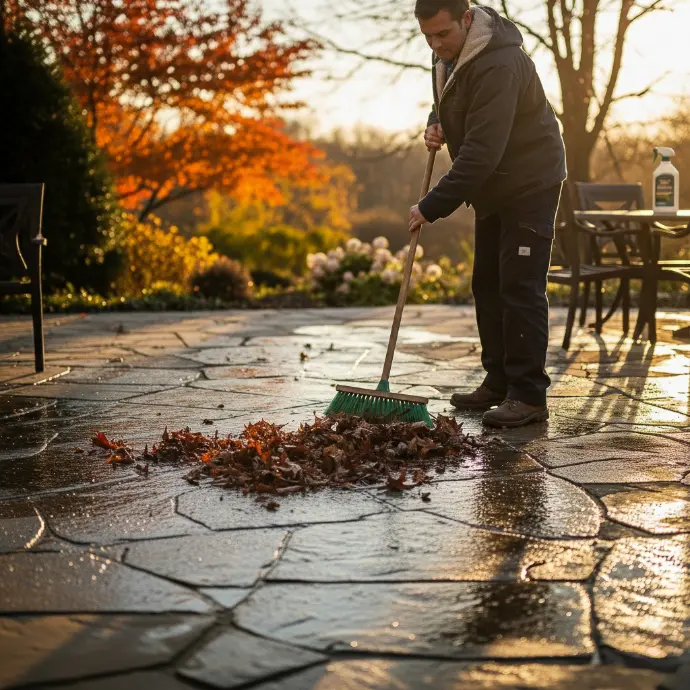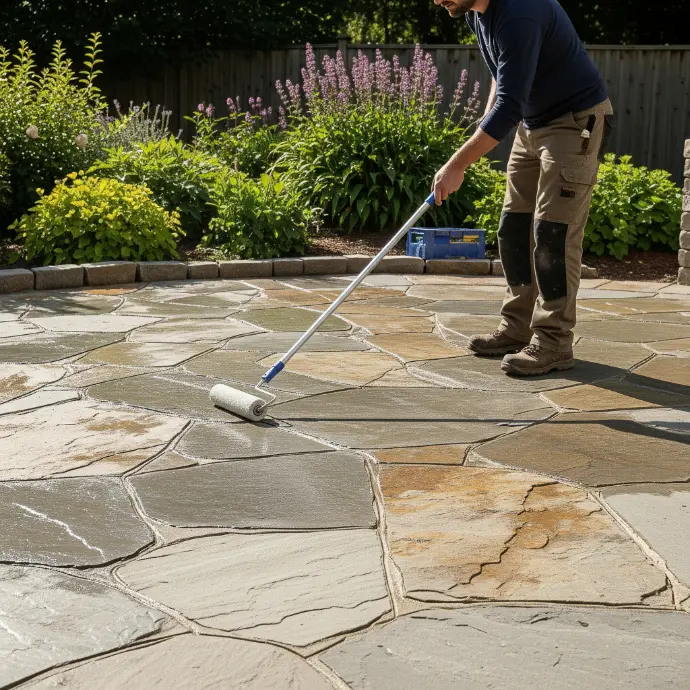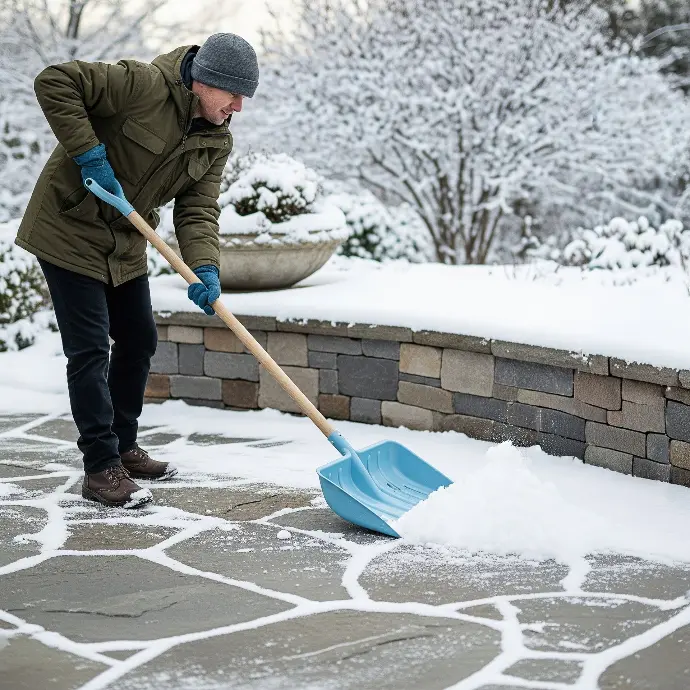Alright, let's talk about winter.
Not the fluffy, postcard kind. The real winter. The one that gets down to the bone, makes the ground hard as a rock, and tests the very things you've built. We both know the truth: that beautiful stone project (that one you poured your skill, your time, and your guts into this year) is about to face its toughest opponent.
American Stone is taking the science of freeze-thaw and the practical application of sealers, and translating it into plain English.
You remember that day. The sun was out, the tape measure was humming, and the dust was flying. You were laying down a pattern, getting that mortar just right, or placing that final stone on a fire pit. You poured your blood, sweat, and a whole lot of expertise into building something that was going to last. A legacy. A statement.
But now, the air is getting a little crisp. The mornings are colder. And every pro in the Mountain West knows what’s coming: the freeze-thaw cycle.
That's the silent villain of every outdoor project. It's the relentless one-two punch of water seeping into microscopic pores, freezing, expanding, and then thawing, leaving behind tiny cracks that compound over time. It’s the slow, quiet erosion of all your hard work. And for a professional (or a dedicated DIY hero) that’s a gut punch.
The good news? You’ve got a guide. This isn’t just a list; it’s a strategic playbook designed to make sure your work and the trust your clients have in you stands strong against the elements. We’re not just providing materials; we’re providing the wisdom to protect the investment, the reputation, and the legacy you’re building.

Step 1: The Pre-Winter Prep. Clean, Inspect, and Prepare for Battle.
Before you even think about putting down a protective layer, you've got to get the surface ready. Just like you'd never start a new construction without a solid foundation, you can't protect stone without a clean slate.
The Deep Clean: Winter's a long rest for your outdoor projects, but the dirt from a full season is a liability. Take the time to clear away all the debris: leaves, dirt, pine needles, everything. A simple broom and a hose with a spray nozzle are your best friends here. For stubborn grime, a pH-neutral cleaner specifically designed for stone is your go-to: SureClean Surface Cleaner Avoid anything acidic, as it can do more harm than good. A clean surface ensures your protective seal will adhere properly and do its job.
The Check-up: This is a crucial step often skipped. Walk every square foot of your project. Are there any small chips, cracks, or loose stones? This is your last chance to address them before the real cold sets in. Small cracks today are big problems tomorrow. Repairing them now prevents water from getting a foothold and beginning the damaging freeze-thaw cycle. A little repointing or patching now saves you a major headache come spring.

Step 2: The Armor. Sealing Your Investment for a Long, Hard Winter.
This is your main line of defense. Think of a quality stone sealer as a suit of armor for your project. It's the one thing that will prevent water from penetrating the surface and wreaking havoc. Check out our selection of sealers.
Understand Your Sealer: Not all sealers are created equal. You'll find two main types:
Penetrating Sealers: These are the unsung heroes. They soak deep into the stone's pores, providing a long-lasting, invisible barrier that repels water and stains from within. They don't change the look or feel of the stone, they just make it bulletproof. This is the top choice for natural, authentic looks.
Topical Sealers: These form a protective film on the surface. They often add a glossy, "wet look" finish and can be great for added durability against foot traffic and abrasions, but they can be more prone to showing wear over time.
Application is Everything: Before you apply, the stone must be bone-dry. We’re talking at least 24-48 hours of no rain or heavy moisture. The temperature should be above freezing and not too hot. Follow the manufacturer’s instructions to the letter. A quick water test is a great way to check your work: if water beads on the surface and doesn’t soak in, you're good to go

Step 3: Ongoing Vigilance. Smart Choices for Winter Maintenance.
The prep work is done, the armor is on. Now, it’s about smart day-to-day choices once the snow starts to fall.
The Problem with Salt: Let’s get straight to it. Road salt and many de-icing chemicals are the biggest enemies of stone. They contain chlorides and sulfates that can corrode mortar, stain the stone, and break down the surface. They will void most stone warranties.
Your Safe Alternatives: When you need traction and ice-melting power, reach for a product with a calcium chloride base. It’s far less corrosive to both your stone and the surrounding landscape. Check out our stone friendly options we carry: Ice Melt Options
Shovel Smart: When it comes time to move the snow, use a shovel with a plastic or rubber blade. A metal shovel is an absolute no-go. One quick scrape can scratch or chip the surface, compromising the sealer and creating a perfect entry point for water.
Why This Matters: The Legacy You're Protecting
As a contractor or a DIYer, you’re creating spaces that people will love, spaces that will last. The work you put in today, the care you show in the off-season, isn’t just about avoiding a few cracks. It's about protecting your reputation, ensuring your client’s happiness, and safeguarding the pride you have in a job well done.
Because when spring comes, and the snow melts to reveal a patio, walkway, or wall that looks just as perfect as the day you finished it, your client will remember. They’ll remember the quality, the foresight, and the peace of mind you delivered.
And they’ll know, without a doubt, that you’re their stone guy.
Ready to Arm Your Projects?
Explore our full line of stone sealers, cleaners, and maintenance products, and get the expert advice you need to protect your investment this winter. Our team knows these materials and the Mountain West climate. We’re here to help you win.
How to Protect Your Outdoor Stone Projects This Winter: The Ultimate Guide for the Utah & Mountain West Pro